DIY SCIENCE AT CHRISTMAS
GOT TIME TO KILL AND KIDS TO KEEP QUIET OVER THE HOLIDAYS? HERE’S SOME FESTIVE ACTIVITIES WITH A LITTLE LEARNING BAKED IN
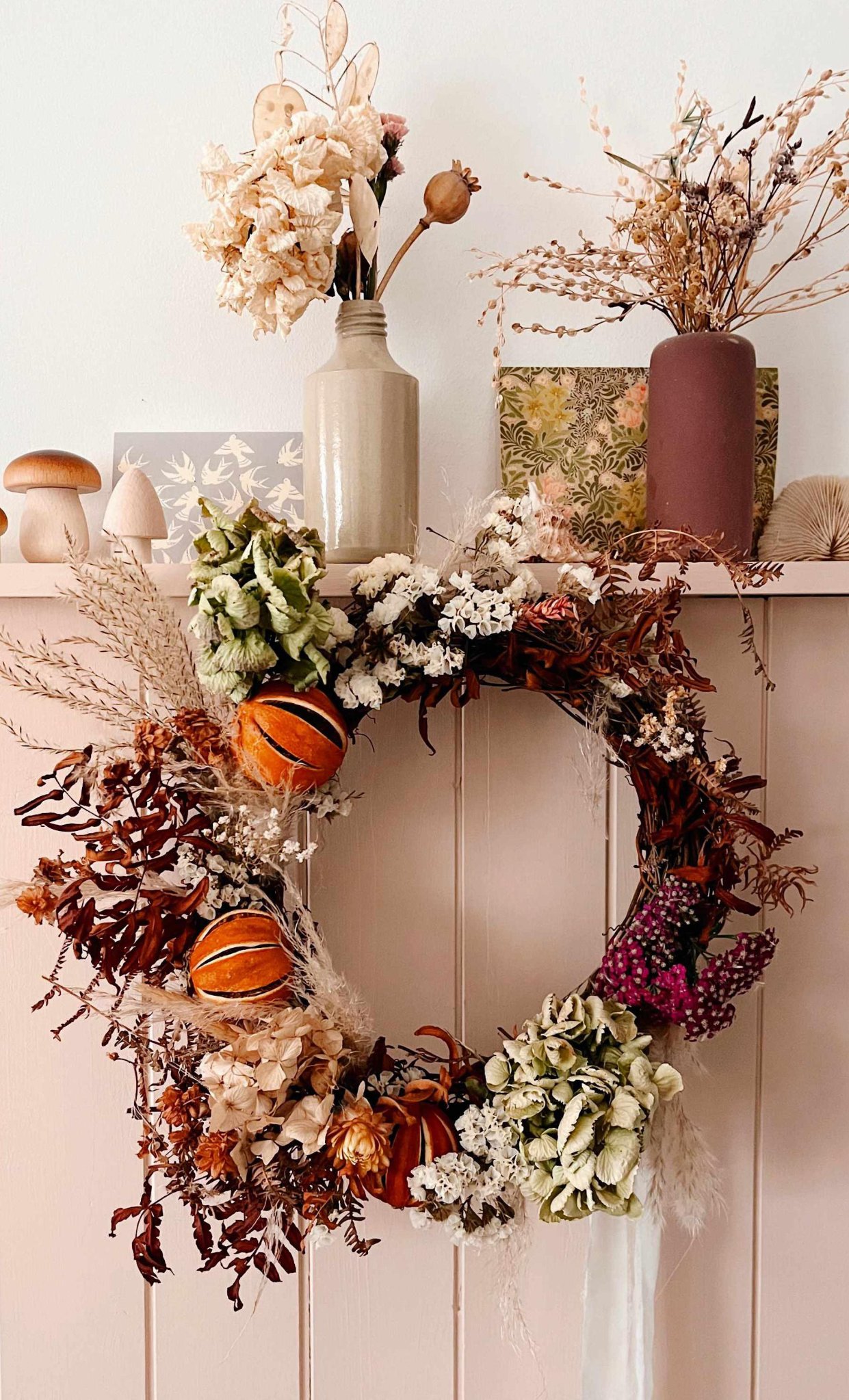
Make a Jupiter-themed wreath for your door
All you need to make a Christmas wreath is some foraged materials and a little knowhow. But with a few careful choices you can give your wreath an astronomy theme by introducing some planetary colours to your festive decorations.
As planets are (generally) round, they’re the ideal subject matter for a wreath. Jupiter’s colours work well for a Christmas wreath, which means you’ll need to gather cream and brown materials, such as bracken, ferns, dried flowers and grasses. And of course, you’ll need something red to signify the Great Red Spot – a large anticyclonic storm that’s been swirling in Jupiter’s atmosphere for centuries. You could use a hydrangea head, poinsettia or achillea, which you may still be able to find in your garden.
“As planets are (generally) round, they’re the ideal subject matter for a wreath”
If you want to give your wreath an Earth theme, look for green, blue and white foliage. Alternatively, you could use red and orange foliage if you decide to base your wreath on Mars.
Deciding on a colour palette is a good starting point, but highlighting distinguishing features, such as the Great Red Spot on Jupiter or the rings of Saturn, is a great way to make your wreath stand out from the crowd. (You can see Jupiter, as photographed by the James Webb Space Telescope, in James Webb’s first year in space).
You can find plenty of construction materials outside: berried ivy, eucalyptus, ferns and hawthorn work brilliantly for wreaths, and you might also still have things in your garden that you can add. Think about the look of your wreath before foraging and there’ll be no need to waste anything.
If you’re planning on using dried flowers and grasses, you’ll need to allow a few weeks to let them dry, however most will dry into the wreath – so you can work with fresh materials knowing they’ll dry out over time.
What you’ll need
• Rattan base
• Wire
• Scissors
• Selection of cream, brown and red foliage
• Dried oranges
• Dried hydrangea heads
• White statice flower (or similar)
• Something red to represent the Great Red Spot
• Ribbon
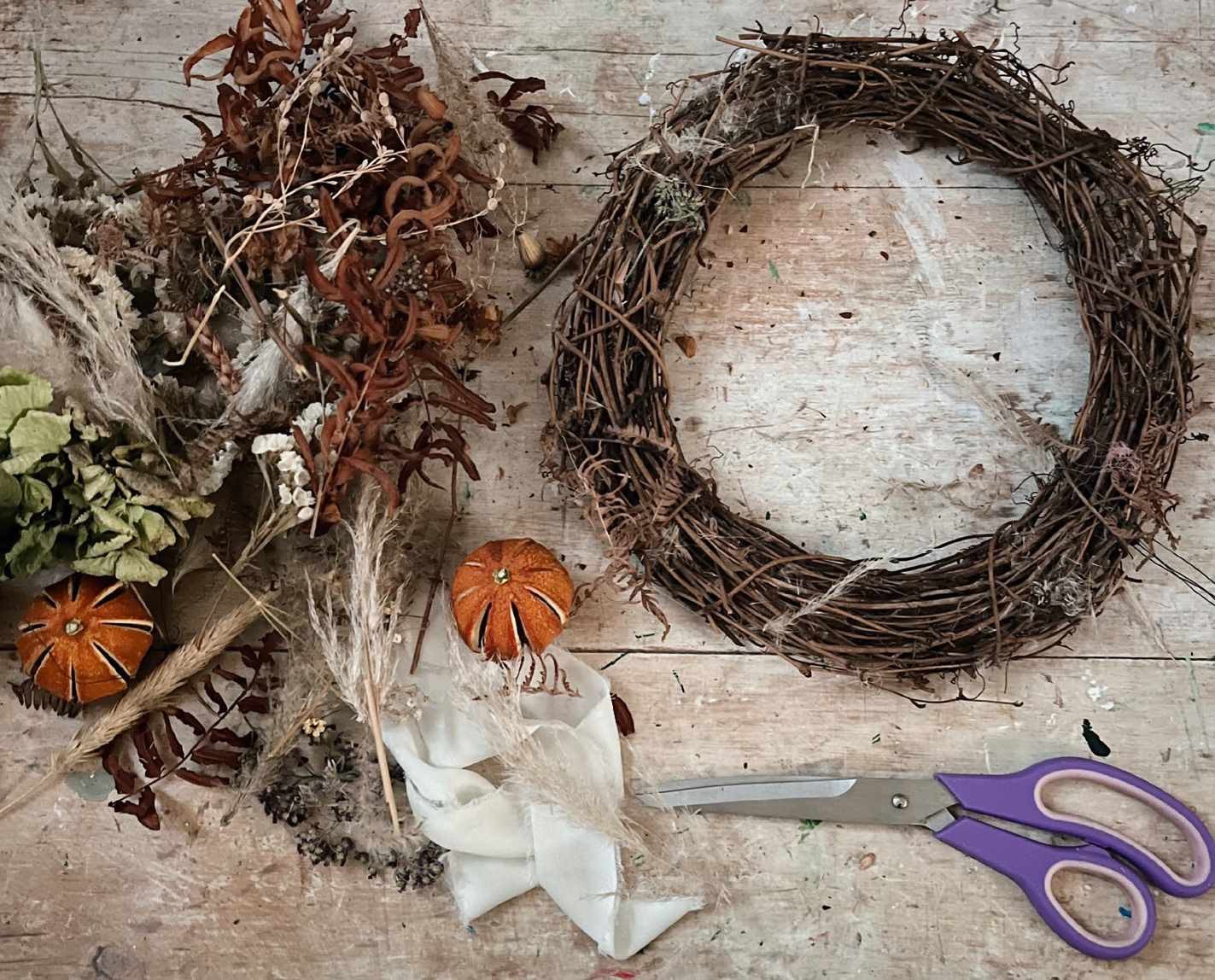
What to do
1. Weave the ends of the brown foliage into the rattan base, securing it with wire if necessary. Position your foliage so that it all faces the same direction and fans out slightly, to create balance and movement.
2. Thicken up the left-hand side by adding grasses and bracken. Try to vary the colours, to represent Jupiter’s stripes. Like before, weave the ends of the foliage into the base and secure with wire if needed.
3. Staying on the left-hand side, attach the dried oranges. Fill in any gaps between the oranges with brown and cream foliage, so they look like they’re nestled into the wreath, rather than sitting on top of it.
4. To represent the auroras discovered by NASA’s Voyager 1 space probe in 1979, cluster some white statice flowers (any white flower or berries will do) at the top and bottom. Cutting the flower stems short enables you to poke them into the base, and have them sit facing outwards.
5. Finally, use the other materials to feather around the left-hand side, and into the right, to finish off the main bulk of the wreath. The last thing to do is to add the finishing touch: the Great Red Spot in the bottom-right. Tie on a ribbon and it’s ready to hang and celebrate the season.
How to make the ultimate Christmas leftovers sandwich
After a typically indulgent Christmas dinner, you’re usually left with a mountain of meat, stuffing, roast potatoes and the half-dozen pigs-in-blankets that not even Uncle Carl could squeeze in. Casting all this in the bin would be a profound waste and an environmental travesty: 1kg of food waste in landfill produces the equivalent of 2.5kg of carbon dioxide emissions. There’s only one thing for it: all those leftovers need to be eaten! Enter the Christmas leftovers sandwich…
You can forget the simple ‘leftovers crammed between slices of white bread’ recipe of yesterday, though. Nowadays, the ‘Christmas sandwich’ is the stuff of hipster coffee bars, delicatessens, supermarkets and corner shops alike. You can all too easily find yourself agonising over an endless choice of artisanal sandwiches, paninis and wraps loaded with prime turkey, organic sage and onion stuffing, and sickly-sweet cranberry sauce. There’s even an annual Christmas sandwich festival in London, where top chefs showcase their best offerings. But in these belt-tightening times, it’s reassuring to know that with a bit of food science, you too can turn what was once pauper’s fare into a feast to rival the high street’s finest offerings.
The first critical decision when you’re constructing the ultimate Christmas leftovers sandwich is bread. And the trick is to keep it simple. You can shun the crusty bloomers and posh brioche – the filling is the star of the show here. My previous research has found that bread should be high quality but primarily serve as a soft, neutral vehicle for what’s inside. The total thickness of the bread should be about the same as that of the filling.
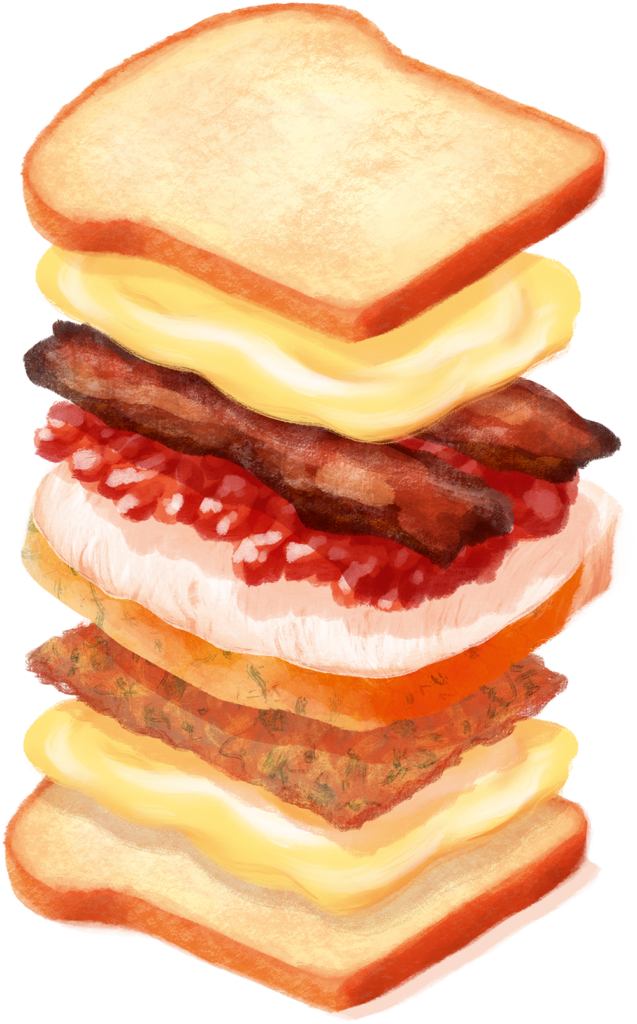
To each slice add a generous 1-2mm smearing of butter, which excites fat receptors in the mouth and enhances flavour, but also provides a waterproof layer to protect the bread from any liquid seepage and unpleasant sogginess from the filling. Butter (which is more flavourful than margarine) allows flavour compounds to better disperse throughout and release their aromas, thus boosting the sandwich’s overall enjoyment factor.
Always avoid the temptation to shoehorn as much as possible between those two slices. For maximum enjoyment, my research has shown that the total height of the sandwich should comfortably fit in the mouth, which works out at between 4.5cm and 5cm for most people’s chops.
Turkey is the centrepiece of the classic Christmas sandwich, which presents a challenge because it’s perhaps the blandest meat going. Few people realise that turkeys are actually game birds, which have succulent and tasty meat – a far cry from today’s oversized broiler birds that are bred for lean bulk rather than fat and flavour. A broiler turkey’s unexercised muscle and absence of fat reserves creates the perception of dryness and blandness.
As well as a goodly portion of fat (from the butter, if not the bird), a great sandwich relies on a balance of the basic tastes: sweetness, saltiness, sourness and umami. A steady hand is needed when applying the cranberry sauce – too much and it’s game over. When overall sweetness of each mouthful exceeds the equivalent of a 9 per cent sugar solution, food becomes sickly and unappealing. Stuffing is a must as it adds a little sweetness but also, and more importantly, gives much needed depth – its sage and onion aromas waft up the back of the throat and into the nasal cavity, where it’s experienced as a burst of herby flavour. Generally speaking, the more mouth sensations that are experienced with every bite, the more enjoyable the food is.
A good grind of pepper will give some pungent heat to titillate the mouth – the irritating chemical in black pepper, called piperine, stimulates hot-pain nerve fibres in the same way chilli does to create the illusion of heat. If you’re feeling adventurous, add some leftover bacon for crunch and texture, an extra hit of saltiness and a powerful kick of umami – the savoury ‘meaty’ taste that makes soy sauce, Parmesan and cured meats so irresistible. If you don’t use bacon and use unsalted butter, then season the meat with a sprinkle of salt. This amplifies all the flavours and boosts sweetness perception.
Forget all the trendy extras like Brie, chorizo, cabbage slaw and mayo. Research shows that a sandwich’s deliciousness and structural integrity plummets when you have over four fillings (3.6 being the optimum, if that were possible!). Serve with a side of salad for some freshness and much-needed healthfulness. Following the rules above, select your favourite ingredients and whatever you do, don’t subject your family to the bland turkey horror that marred my youth.
Final note: I recommend buying a heritage breed bird that has been bred to high welfare standards, if you want to discover real turkey flavour.
Stuart is the author of The Science Of Cooking (£20, DK).
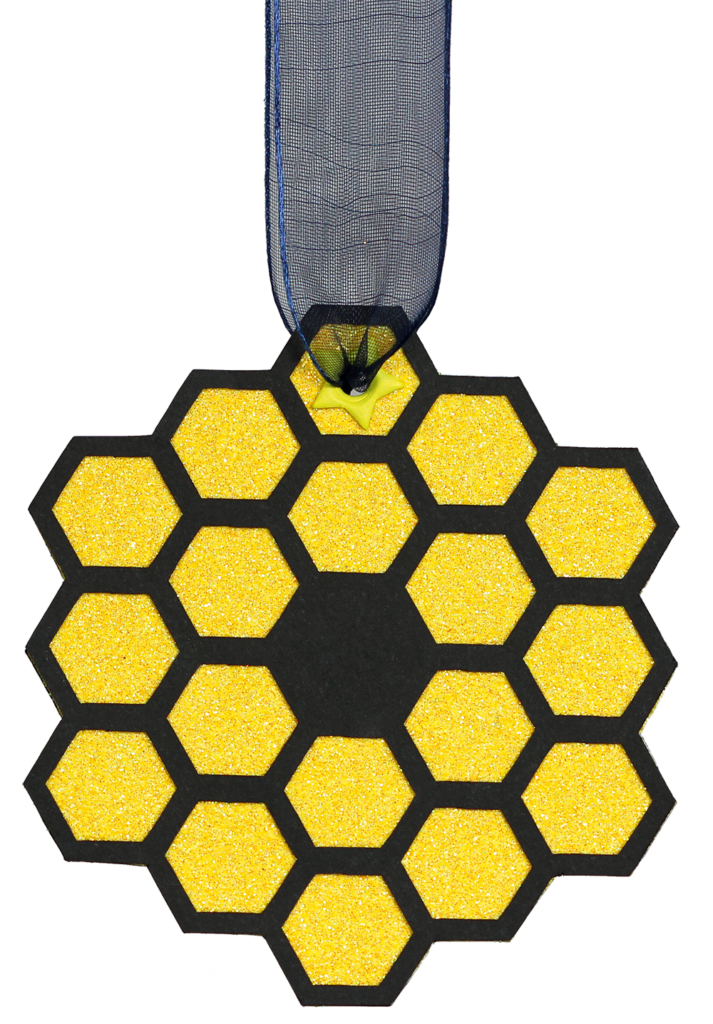
Make a DIY bauble for your tree, inspired by the James Webb Space Telescope
The James Webb Space Telescope (JWST) was launched on Christmas Day 2021, so why not celebrate its one year in space with your own handmade version? You don’t need much in the way of materials, and it’s a fun project that won’t take much time. You can make a single ornament threaded with ribbon, or string several into a chain to make a JWST garland. If you’re looking for a way to spice up your bauble, how about replacing the gold card with one of the incredible photographs from the JWST itself? Head here for inspiration.
What you’ll need
• Templates
• Scissors or a craft knife
• Gold card
• Black card
• Metal ruler
• PVA glue
• Hole punch
• Grommets
• Ribbon
What to do
1. First, download and print the templates from bit.ly/JWST-bauble. There are three pieces that make up this JWST ornament: the front grid (A), the primary mirror (B), and the back (C).
2. Cut out the templates for B and C using scissors or a craft knife. Use the templates to cut B from gold card, and C from black card, for the back of the bauble.
3. Using a craft knife and a metal ruler, use the template to carefully cut A from black card. If you don’t have a craft knife, you can use a pair of small scissors with a fine blade, like nail scissors.
4. Using PVA glue, stick A onto B. Wet glue, like PVA, is ideal for gluing onto card with a texture (if you’re using glitter card, for example), otherwise a glue stick is fine for smooth card.
5. Glue C to the back of B to give your bauble a backing and a little extra stability. Then leave it leave to dry.
6. Once the glue is dry, punch a hole in the top using a hole punch. Reinforce the hole using a grommet for added durability, if you wish.
7. Finally, thread some ribbon (or similar) through the hole, and tie a knot in it to secure it on your bauble.
Holly is staff writer for BBC Science Focus.
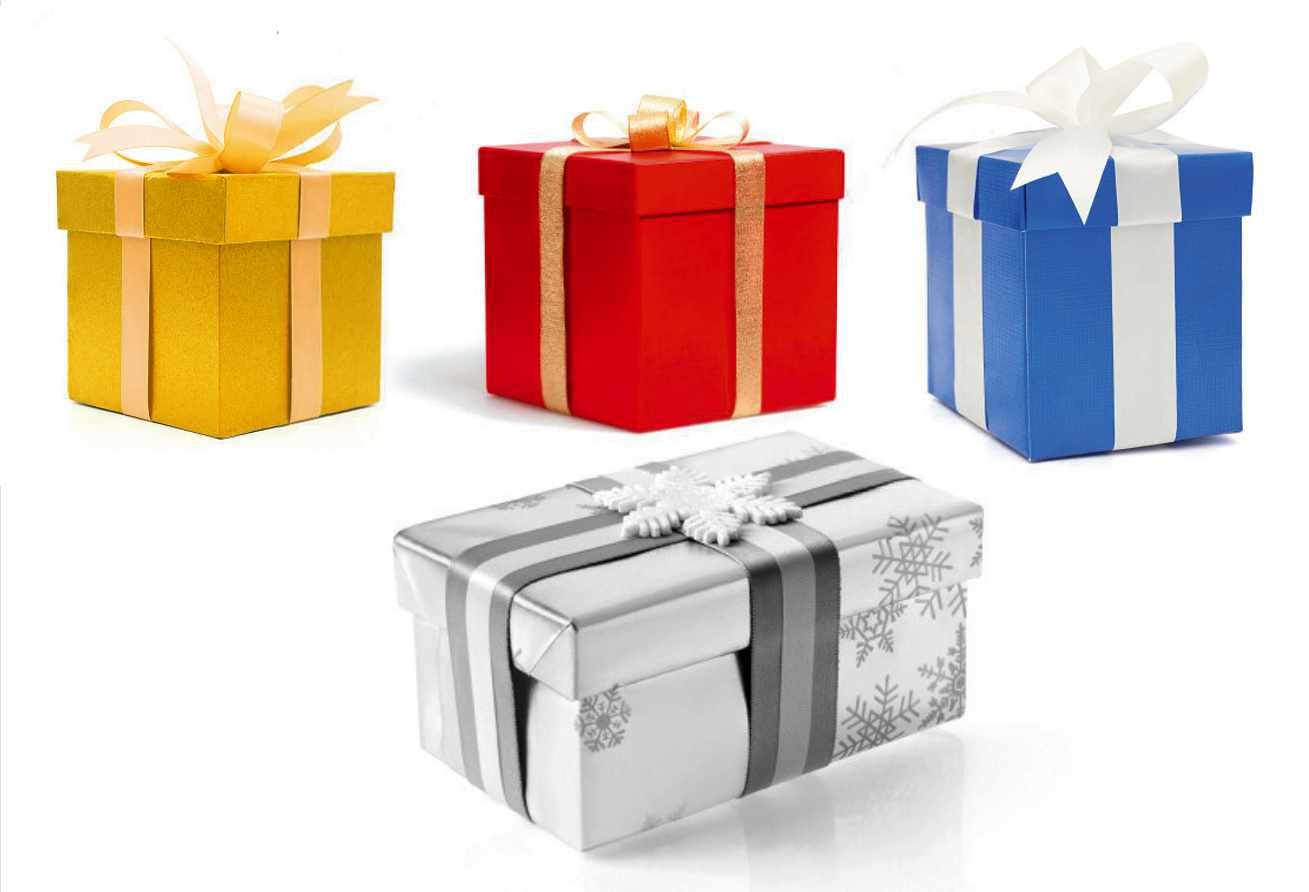
Puzzled over presents
Zak has forgotten to attach name tags to his Christmas gifts. He remembers that the silver present wasn’t for his mum, and dad’s present is either gold or red. The blue present belonged to either his sister or his brother. If his mum’s present is red, his sister’s is gold, but if his mum’s is gold, his sister’s is blue. Who should receive each gift?
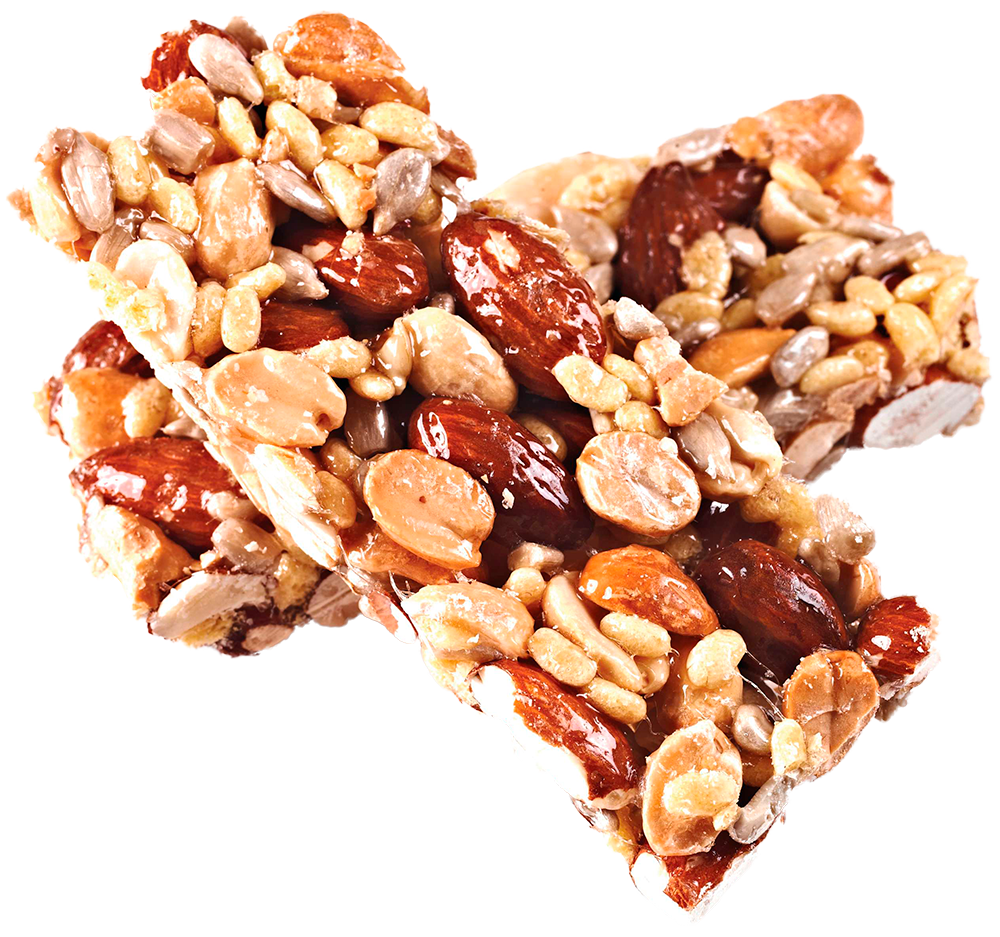
Insulation calculation
Sven Svensen is nearing the final phase of his preparation for his trek across the Arctic. An important part of his preparation is to put on weight to help protect him from the cold. Starting today, and for the following 200 days, he must gradually increase the number of calories he eats by 100 every day, starting from his usual 2,540-calorie daily intake. It doesn’t really matter what he eats to gain the weight, so he’d prefer to do it by eating Wazoo nutrition bars, which contain 140 calories each. On how many of the days where he follows this plan will he be able to consume nothing but Wazoo bars?
For the answers to these puzzles, and for more Christmas brainteasers, visit bit.ly/xmas_puzzles_2022

FESTIVE COCKTAILS WITH A SPLASH OF SCIENCE
Alcohol (aka ethanol) is a deeply unpleasant, toxic substance that irritates the mouth and sends a harsh burning sensation rushing up the nose. It’s a poison that needs mellowing. Hence, we have cocktails.
An analysis by chef and bartender extraordinaire Dave Arnold, revealed that the average alcohol concentration of the world’s favourite cocktails was 15-20% ABV, sugar concentration was 5-9g/100ml (equivalent to about four sugars in a cup of tea), and acidity was somewhere between a Honeycrisp and Granny Smith apple (equivalent to 0.7-0.9 per cent solution of citric acid). If you want to throw something together following these tried and tested ratios, mix two parts high-strength alcohol (gin, vodka, whisky, rum) to one-part sugar (or maple syrup) and one part sour (lime or lemon juice). A daiquiri, for example, can be made with two shots of rum, a shot of freshly squeezed lime juice and a shot of sugar syrup (one part sugar to one part water by weight), shaken with ice and poured.
Ice is key, as it dilutes and chills the drink. As ice cubes melt, they absorb heat from the surroundings – clatter your iced cocktail in a shaker for over 12 seconds and the liquid that emerges is -4°C!
For flavours, we can turn to flavour-pairing theory. This is based on the principle that flavours that harmonise well (red wine/red meat, tomato/basil, pork/apple) do so because they share many flavour compounds. By analysing flavour compounds in different ingredients, we can predict pleasing combinations. Applying these principles with some Christmassy twists, here are my three festive cocktail suggestions to dazzle you and your guests…
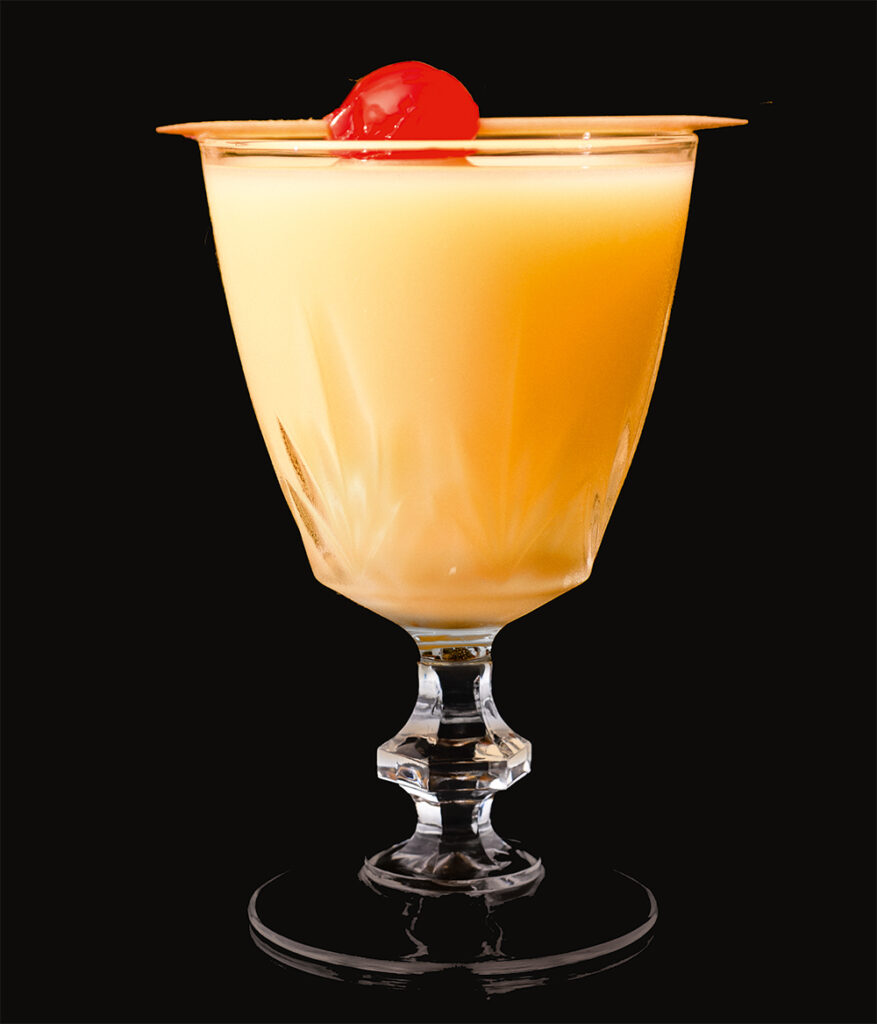
SANTA’S SNOWBALL
The most famous of Christmas cocktails, the snowball is mixture of advocaat, lemonade and lime, although it has the alcohol content of an alcopop (7% ABV), making it more of an alcoholic lemonade than a cocktail. Advocaat is an egg and brandy liqueur, invented by the Dutch. It makes for a rather sickly drink, so to knock off some of the acidity and up the alcohol content, I’ve added some Cognac. Pour the advocaat and Cognac over ice in a glass of your choosing, add the lemonade and stir. Add lime juice, giving a final stir.
Lemonade: 2 measures (50ml)
Advocaat: 2 measures (50ml)
Cognac: 1 measure (25ml)
Fresh lime juice: one tablespoon (15ml)
Alcohol content: 13.2% ABV
Sugar: 6.4g/100ml
Acidity: 0.86 per cent
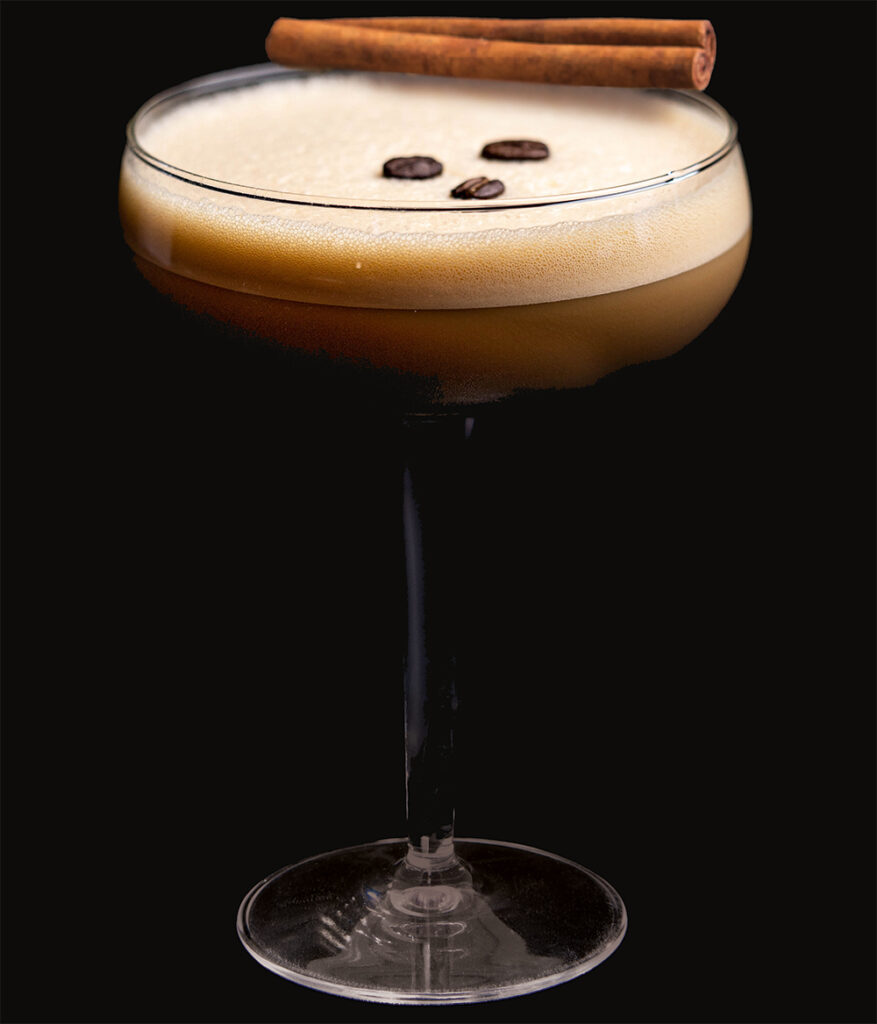
CHOCOLATE CRACKER
If you make this cocktail, opt for chocolate-flavoured vodka (38% ABV), rather than a chocolate vodka liqueur (28% ABV), which will be sweetened. The acidity comes from lemon or lime juice, while salt increases flavour perception, as well as the sensitivity of sweetness receptors. Mix all the ingredients in a glass with four ice cubes and stir well. Strain into a glass containing a cube of ice. Garnish with coffee beans, crystallised ginger or a cinnamon stick, all of which are strong flavour pairings to chocolate.
Chocolate-flavoured vodka: 2 generous measures (60ml)
Fresh lemon or lime juice: one tablespoon (15ml)
Simple sugar syrup: one tablespoon (15ml)
Chocolate bitters: two dashes
Pinch of salt
Alcohol content: 19.2% ABV
Sugar: 7.4g/100ml
Acidity: 0.70 per cent
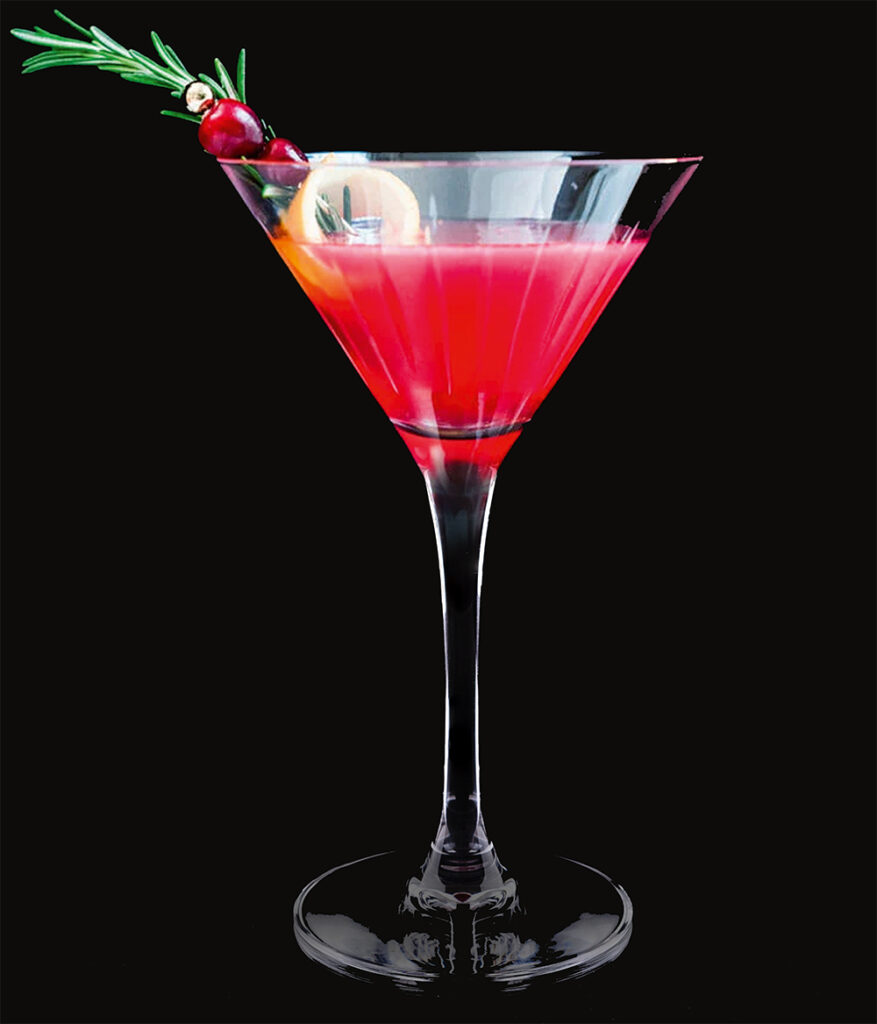
FESTIVE ‘MARTINI’
The classic martini is a mix of gin (or vodka) and vermouth, typically served with an olive. The name has come to mean anything served in a martini glass, and this creation is no different. Using vodka or gin as a base, it combines the fruitiness of cranberry juice with the tang of lime, and the orange notes of Cointreau. Shake with ice and pour into martini glasses rimmed with sugar, then serve with a curl of orange peel.
Gin or vodka: 2 measures (50ml)
Unsweetened cranberry juice: 1 measure (25ml)
Cointreau (triple sec): 1 measure (25ml)
Fresh lime juice: 2 teaspoons (10ml)
Alcohol content: 16.2% ABV
Sugar: 8.6g/100ml
Acidity: 0.81 per cent
Stuart is the author of The Science Of Cooking (£20, DK).